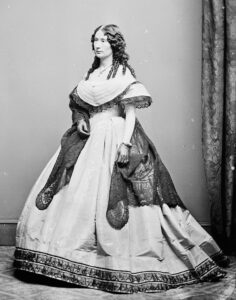
Early Life and Marriage
Born as Mary Frances Moss on July 20, 1826, in Winchester, England, to Jane Moss and Tomas King, Laura Keene’s life took a dramatic turn when she married British Army officer John Taylor in 1844. Their union brought forth two daughters, Emma (born in 1846) and Clara Marie Stella (born in 1849). Following Taylor’s discharge from the army, he ventured into the tavern business but eventually found himself in legal trouble, resulting in his arrest and transportation to Australia on a prison ship, leaving his wife and daughters financially unsupported. In the absence of any monetary assistance, Mary Taylor decided to adopt the name Laura Keene and embark on a career in acting. Her efforts to locate Taylor for a divorce proved fruitless, and they remained legally married until Taylor’s death in 1860.
Theatrical Ascent
Laura Keene’s debut performance in England was on October 8, 1851, in Richmond, on the southwest side of London, where she successfully played the tragic role of Juliet in Shakespeare’s Romeo & Juliet. Twenty days later, she made her London debut at the Theatre Royal as the leading role in The Lady of Lyons. Within a year, her outstanding presence on stage caught the attention of James Wallack, an American actor and theatre manager. He invited Laura to be the leading actress at his theatre in New York City and she eagerly accepted the offer. While it meant leaving her children with her mother for a short time, it was an opportunity to get her family out of London, an unhealthy place for the working class.
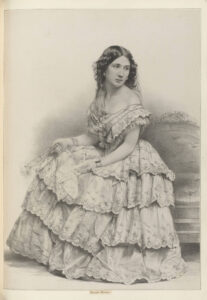
Keene swiftly rose to prominence as an actress and became the first female entrepreneur in the New York theater scene. Unexpectedly departing from Wallack’s company, Keene relocated to Baltimore, Maryland, where she took charge of the Charles Street Theater in December 1853, serving as manager, director, and performer. While there, Laura produced 34 plays and was praised by critics and the people for her performances. A newspaper published the following letter about Laura: “She is an actress of unquestionable merit – the most pleasing and popular that has ever visited Baltimore. Aside from this, she is exquisitely beautiful, and sustains an unsullied reputation for all those qualities of virtue which adorn and dignify woman.”
Her theatrical pursuits led her on tours to California, Australia, and California again (1854-1855). She briefly managed the Union Theatre in San Francisco before embarking on a tour of Australia with the renowned actor Edwin Booth, which ended due to Booth’s disruptive behavior. Upon her return to California, she managed the American Theatre until new legislation prohibited entertainment on Sundays, significantly reducing attendance.
Returning to New York City, Keene leased the Metropolitan Theatre and rebranded it as “Laura Keene’s Varieties,” assuming roles as manager, director, and star performer until William Burton acquired the property. She then gathered investors and collaborated with a theater-specialized architect to construct a new venue tailored to her vision. This theater, known as “Laura Keene’s Theatre,” opened its doors on November 18, 1856, achieving notable success with productions such as “The Elves” in 1857 and the debut of “Our American Cousin” in 1858.
In November 1860, Keene introduced the musical “The Seven Sisters,” characterized by lavish sets and a remarkable 253-performance run, a remarkable feat for the era. Health issues forced her to relinquish management responsibilities by 1863. However, she continued as the manager and star of a touring company that traversed the United States for most of the subsequent decade.
The Lincoln Assassination
In a tragic twist of fate, Laura Keene became connected to one of the most significant events in American history. At Ford’s Theatre in Washington, DC, during its second season, she embarked on a two-week engagement with Ford’s stock company, culminating in a performance of the British hit comedy “Our American Cousin.” Keene played the role of Florence Trenchard, supported by guest stars John Dyott and Harry Hawk from her own New York company.
The fateful performance, scheduled for April 14, 1865, also served as a benefit for Keene, enticing President Lincoln to attend. The theater owner, John T. Ford, used both the benefit and Lincoln’s presence as incentives to fill the venue to capacity. Tragically, this evening marked the assassination of President Lincoln by John Wilkes Booth, unfolding before Keene’s very eyes. President Lincoln and Mary Todd Lincoln were in attendance, along with friends Henry Rathbone and Clara Harris. This horrific event would forever be etched in history, and Laura Keene’s name would forever be associated with this tragic moment.
It has been greatly debated among historians as to whether Laura Keene ever entered the presidential box that night. The following excerpts are from the book Lincoln’s last hours by Army Surgeon Charles Leale, who also attended the play that night:
Suddenly there was a cheering welcome, the acting ceased temporarily out of respect to the entering Presidential party. Many in the audience rose to their feet in enthusiasm and vociferously cheered, while looking around. Turning, I saw in the aisle a few feet behind me, President Lincoln, Mrs. Lincoln, Major Rathbone and Miss Harris…
For a few moments all was quiet, and the play again held my attention until, suddenly, the report of a pistol was heard, and a short time after I saw a man in mid-air leaping from the President’s box to the stage, brandishing in his hand a drawn dagger. His spur caught in the American flag festooned in front of the box, causing him to stumble when he struck the stage, and he fell on his hands and knees…”
I instantly arose and in response to cries for help and for a surgeon, I crossed the aisle and vaulted over the seats in a direct line to the President’s box, forcing my way through the excited crowd. The door of the box had been securely fastened on the inside to prevent anyone following the assassin before he had accomplished his cruel object and made his escape. The obstruction was with difficulty removed and I was the first to be admitted to the box…
As I looked at the President, he appeared to be dead. His eyes were closed and his head had fallen forward. He was being held upright in his chair by Mrs. Lincoln, who was weeping bitterly. From his crouched down sitting posture it was evident that Mrs. Lincoln had instantly sprung to his aid after he had been wounded and had kept him from tumbling to the floor…
I lifted his eyelids and saw evidence of a brain injury. I quickly passed the separated fingers of both hands through his blood matted hair to examine his head, and I discovered his mortal wound. The President had been shot in the back part of the head, behind the left ear. I easily removed the obstructing clot of blood from the wound, and this relieved the pressure on the brain.
The assassin of President Lincoln had evidently carefully planned to shoot to produce instant death… which had sent a large round ball on its awful mission through one of the thickest, hardest parts of the skull and into the brain… I then pronounced my diagnosis and prognosis: “His wound is mortal; it is impossible for him to recover.”
While we were waiting for Mr. Lincoln to gain strength, Laura Keene, who had been taking part in the play, appealed to me to allow her to hold the President’s head. I granted this request and she sat on the floor of the box and cradled his head on her lap.
Dr. Leale somewhat revived the President by forcing air into his lungs, and finally detected shallow breathing and a faint heartbeat. There was nothing more to do but wait for Lincoln’s condition to stabilize as much as possible. Dr. Leale and several other men later carried the President across the street to the Peterson boarding house, where he passed away peacefully a little after seven o’clock the following morning, without ever regaining consciousness.
Late Years
Following the assassination, Laura Keene managed to continue working; she undertook management of the Chestnut Street Theatre in Philadelphia in 1869 and then journeyed west. Among her many projects at this time were editing a magazine Fine Arts, writing plays, lecturing and acting. Her second husband, John Lutz, died on April 18, 1869.
Comic actor Joseph Jefferson noted this about Laura Keene:
Although a somewhat puffy‐faced, heavy‐featured woman, she was esteemed a great beauty in her youth; even afterwards her rich and luxuriant auburn hair, clear complexion and deep chestnut eyes, full of expression, were greatly praised; but to me it was her style and carriage that commanded admiration, and it was this quality that won her audience. She had, too, the rare power of varying her manner, assuming the rustic walk of a milkmaid or the dignified grace of a queen.
Laura Keene achieved a level of independence and success that was unheard of for a woman not only in her own time, but for decades thereafter. She served as manager of the Chesnut Street Theatre in Philadelphia from September 1869 through March 1870. Her final theatrical performance was on July 4, 1873, while touring in northern Pennsylvania.
On November 4, 1873, Laura Keene died of tuberculosis at the age of 47 at Montclair, New Jersey, and was buried in Green-Wood Cemetery in Brooklyn.

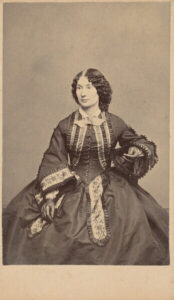
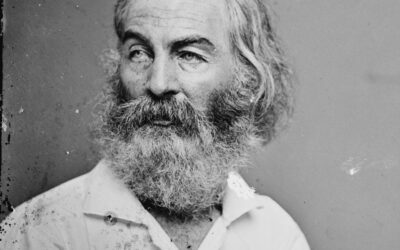
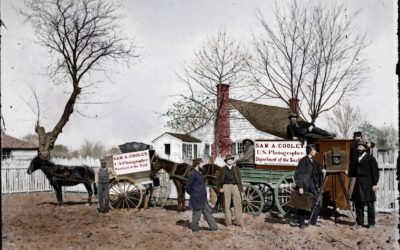
0 Comments